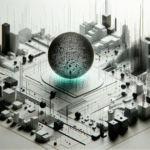5 Tips for Accurate Temperature Mapping Projects
- Be Proactive: Implement temperature mapping best practices as an ongoing part of your quality assurance processes.
- Invest in Training: Allocate time and resources for comprehensive training for all team members involved in temperature mapping.
- Prioritize Sensor Placement: Treat sensor arrangement as an essential aspect of your mapping strategy.
- Select the Right Tools: Equip your team with suitable electronic data logging monitors to ensure reliable data integrity.
- Continuous Improvement: Commit to regularly scheduled temperature mapping studies to build a culture of compliance and quality assurance.
Table of Contents
- Why Temperature Mapping Matters
- 1. Develop a Comprehensive Protocol
- 2. Proper Training and Team Alignment
- 3. Strategic Sensor Placement
- 4. Use Appropriate Equipment
- 5. Implement and Verify Remedial Actions
- Practical Takeaways for Professionals in Pharma, Biotech, and Food Tech
Why Temperature Mapping Matters
Temperature mapping is a systematic approach utilized to ensure that warehouses, laboratories, and similar environments maintain consistent temperature throughout. These processes make it possible to identify hot and cold spots, which are essential for compliance with industry regulations like those set forth by the World Health Organization and other pivotal bodies. Ignoring this vital component can lead to compromised product quality, regulatory fines, and potential public health issues. Thus, knowing how to conduct temperature mapping projects effectively isn’t just helpful—it’s crucial.
1. Develop a Comprehensive Protocol
At the heart of every successful temperature mapping study is a well-structured protocol. This document should articulate the objectives of the study, the procedures involved, and the parameters for acceptable temperature fluctuations. Preparation is key; your protocol acts as a blueprint that guides the mapping process from inception to conclusion.
A comprehensive protocol ensures that all steps, from initial preparations to final analysis, are meticulously followed. This cohesive structure not only facilitates systematic data collection but also enhances overall data integrity. As stated in Eupry’s guide on temperature mapping, a sound protocol provides clarity and safeguards against overlooked details. For regulatory guidance, you can reference the WHO’s standards.
2. Proper Training and Team Alignment
In the hustle of project management, it’s easy to underestimate the value of training; however, it’s an area where accuracy can thrive or fail. Every team member involved should be well-educated on the principles of thermal mapping, including equipment usage, data interpretation, and pertinent regulatory obligations.
Investing time in training ensures that every participant understands their role within the project—each person is a critical cog in the machine. Without this collective knowledge, areas of misunderstanding can lead to inconsistent data, which compromises the entire study’s reliability. As mentioned in Eupry, a well-informed team translates to more dependable results.
3. Strategic Sensor Placement
When it comes to temperature mapping, sensor placement is not an afterthought—in fact, it’s arguably one of the most critical factors that can lean the results towards accuracy or chaos. Sensors should be judiciously distributed in a grid pattern, ideally spaced about 30 meters apart in both vertical and horizontal planes.
High-risk areas, such as near doors, windows, and HVAC systems, require special attention and additional sensors to ensure that temperature fluctuations are adequately monitored. The importance of strategic placement cannot be overstated; it directly impacts the validity of the temperature data recorded. As seen in Sensitech’s insights and Vaisala’s expert article, careful consideration and planning in sensor distribution make a world of difference.
4. Use Appropriate Equipment
Choosing the right electronic data logging monitors (EDLMs) is essential for successful temperature mapping. These devices need to be compatible with the specific environmental conditions you expect to encounter and must be capable of recording the anticipated temperature extremes. A reliable EDLM will provide continuous time-temperature data recording, critical for monitoring shifts in environmental conditions.
When evaluating various equipment options, prioritize reliability and suitability for the conditions of your regulated environment. For further guidance, refer to the World Health Organization’s standards that detail equipment requirements in their distribution guidelines.
5. Implement and Verify Remedial Actions
Once your temperature mapping study’s data has been analyzed, the focus shifts from gathering information to actionable intelligence. Identifying areas that necessitate remedial actions is pivotal—this might include adjusting HVAC systems or introducing new equipment to eradicate hot and cold spots.
Post-remediation, it’s essential to conduct a follow-up mapping exercise to confirm the success of the corrective actions taken. This verification step ensures that your environment aligns with the established temperature standards and regulatory guidelines. The WHO’s guidelines emphasize this point, noting that effective monitoring and adjustment are integral to maintaining compliance and quality.
Practical Takeaways for Professionals in Pharma, Biotech, and Food Tech
In summary, conducting accurate temperature mapping projects is no small feat, but with a solid protocol, well-trained personnel, strategic sensor placement, the right equipment, and effective remedial actions, it is entirely achievable. In regulated industries, where the standards are high and the stakes—even higher—implementing these tips is not optional but essential.
For more expert guidance or to explore how QPS Engineering AG can elevate your engineering services in Pharma, Biotech, and Food Tech, don’t hesitate to reach out to us on LinkedIn. Together, we can navigate the complexities of regulated industries with precision and ease.







